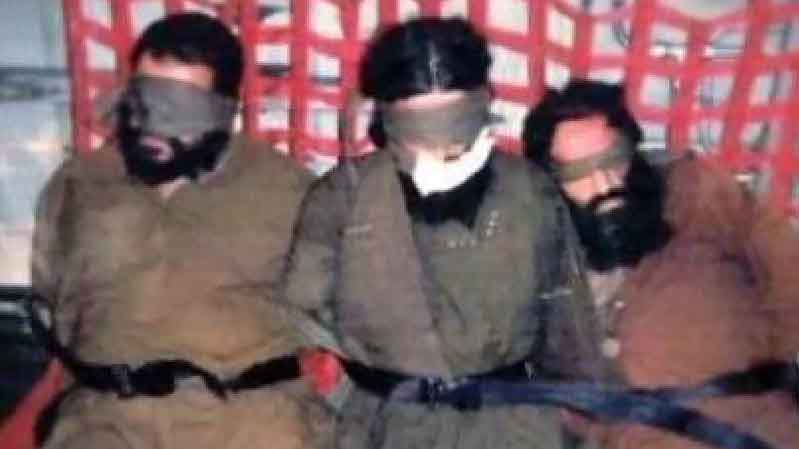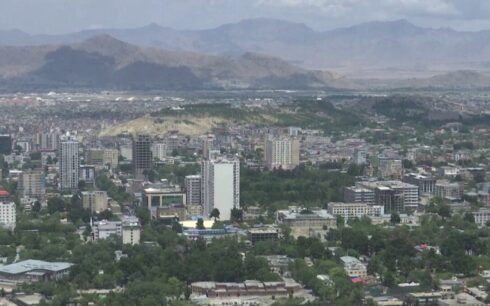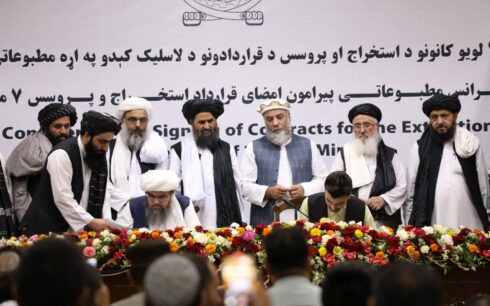One year has passed under the Taliban rule along with resistance and conflicts in Panjshir, Andarab and other parts of the country. From one side, the Taliban has failed to remove the resistance hubs, while from the other, it has violated all international principles and its commitments made in Doha. It has failed in governance too, contrary to the expectations of its supporters within and outside Afghanistan. The Taliban, therefore, has not only failed to get legitimacy within the country but has added to the hopelessness of the people and the international community.
Recent efforts by the Taliban leadership, including Kabul and Kandahar gatherings, as well as, the reshuffles, aimed at overcoming problems in various sectors, reveal that the Taliban has realized that military, political and social movements against them will expand in the upcoming summer if they don’t remove some of these challenges from the way of its rule. These factors will reduce the duration of the Taliban rule/emirate more than its previous one.
Recent appointments, including the appointment of Mullah Abdul Qayyum, to lead the fight in the north, especially in Andarab and Panjshir valleys, are for this purpose.
But Abdul Qayyum Zakir should be called a Taliban “stager”?
Mullah Abdul Qayyum became famous as Zahir, his code name on walkie talkie. He was born in Kajaki district in Helmand 50 years ago in a family belonged to Alizai tribe, which is a dominant tribe in the southern province.
It is said that he spent his childhood and young ages in Jawzjan province (in the north of Afghanistan). After joining the Taliban in his young ages, he went to northern provinces along with a number of fighters from his own tribe, where he soon gained fame in Taliban ranks for his cruelty. He was the most “predacious” Taliban commander after Mullah Dadullah. He was sent to Guantanamo bay in 2001, and then to Pul-e-Charkhi prison in Kabul in 2007 from where he was released mysteriously in 2008. In the same year, he returned to Quetta, Pakistan, to lead bloody frontlines in Helmand and Nimroz provinces. He was on the spotlight once again and was promoted to a military chief in the Quetta council.
During this time, he faced rifts with Akhtar Mohammad Mansoor, who was the deputy of Taliban founder leader Mullah Omar, over commanders’ appointments and the control of drug trafficking routes in southern provinces. After a while, Zakir was arrested with a number of other Taliban leaders in Quetta, by ISI, Pakistan’s intelligence agency. Others were kept in custody, but Zakir was released after a while and was appointed as head of the military commission at the Quetta council.
The arrest of Mullah Baradar, Taliban’s number two and the deputy of Mullah Omar, led to more control over power by Akhtar Mansoor. This led to an increase his doubt and hate towards Mansoor and his involvement in many arrests.
The release of Ibrahim Sadar, who was Taliban’s military chief in 2016, with the support of Akhtar Mansoor caused more rifts among the Taliban leadership in Quetta council, known as Quetta Shura, to the extent that Qayyum Zakir had to resign and return to Helmand, reducing his contacts with the Quetta council.
In 2015, amidst the start of rumours on Daesh emergence in Afghanistan, another person from Alizai tribe, Mullah Abdul Rauf Khadim, emerged, who had a special fame among the Taliban. Mullah Khadim, too, like Zakir, had spent some time in Guantanamo. He grew some interest in Salafism when he was in Guantanamo bay and built close ties with a number of Arab prisoners. Some Arabs in the same cell with him were seen in Daesh leadership in Syria and Iraq after they were released. They officially appointed Mullah Khadim as the deputy leader of Khorasan branch of Daesh.
Meanwhile, due to his ethnic issues and his hate against Akhtar Mansoor, Qayyum Zakir was on the verge of joining Daesh along with Mansoor Dadullah when Abdul Rauf Khadim was killed in US drone strike. A short while later, another ally of him, Mansoor Dadullah, was killed. After that, Zakir was in a challenging situation and was left with no option but to pledge allegiance to Akhar Mansoor. But his hate and opposition to Akhtar Mansoor continued until Mullah Mohammad Yaqub was graduated from madrassa and went to Quetta from Karachi city and sought a main role in Quetta council leadership. This demand by Mullah Yaqub led to rift between him and Akhtar Mansoor. Based on accurate information, Mullah Qayyum Zakir succeeded to convince Mullah Yaqub that Akhtar Mansoor was involved in Mullah Omar’s death by assisting the ISI. Afghanistan’s intelligence agency leaked Mullah Omar’s death in 2013, but Qayyum Zakir leaked this news to the BBC in 2015, and confirmed it.
It is worth mentioning that after the disruption in his ties with ISI, Qayyum Zakir started efforts with the help of Alizai tribe on the border between Afghanistan and Iran to build his ties with Iran’s revolutionary forces. He did so and has kept these relations so far.
Based on information, after Taliban takeover, Iran was trying to make sure Zakir and Sadar Ibrahim, who both have close ties with Iran, are appointed in key posts of Taliban emirate, but the interference of ISI chief Faiz Hameed disrupted the appointment.
After his return to Helmand, Zakir’s friends in the Iranian government facilitated his involvement in one of fuel import contracts from Iran to Afghanistan. This partnership was started during the republic government and continues so far. The imports are also underway by the contractor.
His share in the contact and his control over a key route for drug trafficking, strengthened Zakir’s economic basis. Moreover, his strong position in his tribe changed him into a hub for unhappy Taliban members in south. Now the Taliban leaders in Kabul are worried about his increasing influence in the south; therefore, they have approached him multiple times over the past year. Mullah Baradar and Mullah Yaqub met him few months ago, passing on Mullah Hibatullah’s message to him. After this meeting, Zakir went to meet Mullah Hibatullah and was appointed by him as the commander to supress resistance frontlines in Panjshir and Andarab valleys.
Hibatullah has assigned him to assess the situation in Andarab and Panjshir and return to him with a specific suggestion. It is not clear what has been offered to him in exchange for supressing the resistance.
Qayyum Zakir, a scapegoat or conqueror
Panjshir and Andarabha have harsh terrain with small and big valleys. Its residents are opposing the Taliban emirate. Many of them who were arrested on charges of links with anti-Taliban forces have been released by former Taliban officials and this has reduced intelligence information from activities of anti-Taliban movements.
The fight in Panjshir and Andrab has caused an increasing compression of forces, sharp reduction in equipment and an increase in Taliban casualties, resulting in a violent treatment of Taliban with local residents. In general, this has strengthened the spirit of resistance and its extension to other regions.
Many members of the resistance fronts are from former mujahedeen who have the experience of fighting in harsh terrains during the jihad time. Others are former security force members, who are well-trained with NATO military tactics and the ability of protecting classified information on operations. They have experience of fighting the Taliban. Their number is increasing in the resistance movements every day.
Based on information and according to recent movements by the Taliban in Panjshir and Andarab, it seems that Qayyum Zakir has offered four options to the Taliban leaders – Mullah Hibatullah, Mullah Yaqub, Sirajuddin Haqqani and Abdul Haq Wasiq – to succeed in supressing the resistance.
1. Keeping the status quo. This will for sure increase the Taliban casualties and will lead to an increase in recruitment and extension of resistance forces to other parts of the country by the upcoming winter.
2. All valleys should be evacuated (from civilians). Soldiers should be stationed there. This option seems difficult to be implemented due to its need for high capacity and its national and international dimensions.
3. The evacuation of sub valleys that have lesser number of residents and replacing them with soldiers. The implementation of this option is a bit possible due to its need for lesser number of forces, but it will lead to serious risks. With this option, Taliban forces will be sent to valleys and will change into easier targets for the resistance forces attacks. On the other hand, it will also extend resistance forces in valleys, especially if the resistance forces capture or destroy the main route to Panjshir, closing exit routes for the Taliban. In this case, there is the possibility of the death of all Taliban forces in Panjshir and then in the Andarab valley. It also turns impossible for the Taliban to capture the valleys and it will end up in further extension of the fight and resistance to bigger areas in Afghanistan.
4. Localising the security. Considering the high level of poverty and unemployment among the youths in mentioned areas, this seems as one of the easiest ways, but based on Zakir Qayyum’s remarks, he will not take responsibility for the consequences of this option in the future.
The Taliban’s emirate is faced with deep human resources issues. A big number of Taliban forces are engaged in governance and protection of their leaders and some of them have left their lines over economic problems, non-payments and no role in power, while others have left over ethnic issues.
Information shows that repeated failures by Taliban commanders and its groups have resulted in seeking Haqqani’s help while the Haqqanis have never attended big fights like the southern Talibs have. Haqqanis have experience in complex terrorist and suicide attacks, but they have moved away from this responsibility under the pretext of being busy in helping families hit by floods and earthquakes in parts of the country. A big number of Taliban forces have been stationed in Balkhab. Others who have been deployed in corps bases fear being at risk if they are deployed outside their duty region. In this case, conventional warfare needs more financial resources than guerrilla wars.
Conclusion
No doubt Zakir Qayyum makes effort to find financing resources to maintain his force and he might have been a suitable option for this and for financing his own/tribal forces using his experience in fighting and he might supress his newly emerged opponents within Taliban structure. But he himself is not sure about achieving this goal.
On the other hand, after repeated failures of senior Taliban commanders in Panjshir and Andarab and over the fear of Taliban leaders from Zakir’s financial strength, they think they will get rid of Qayyum Zakir by keeping him busy in the “valleys of death” where he, too, will face the same fate as Mullah Borjan did in Tangi Abrishum in Sarobi district of Kabul in 1996.
Time will prove whether the “savior” will become more cruel or he will be sacrificed as a “scapegoat” for stability of the rule of strangers’ oppression under the name of Taliban emirate.
The writer, Rahmatullah Nabil, is the former head of Afghanistan’s intelligence agency and a former presidential runner.
Amu does not endorse or represent views expressed in this article and other opinion pieces published on its website.





